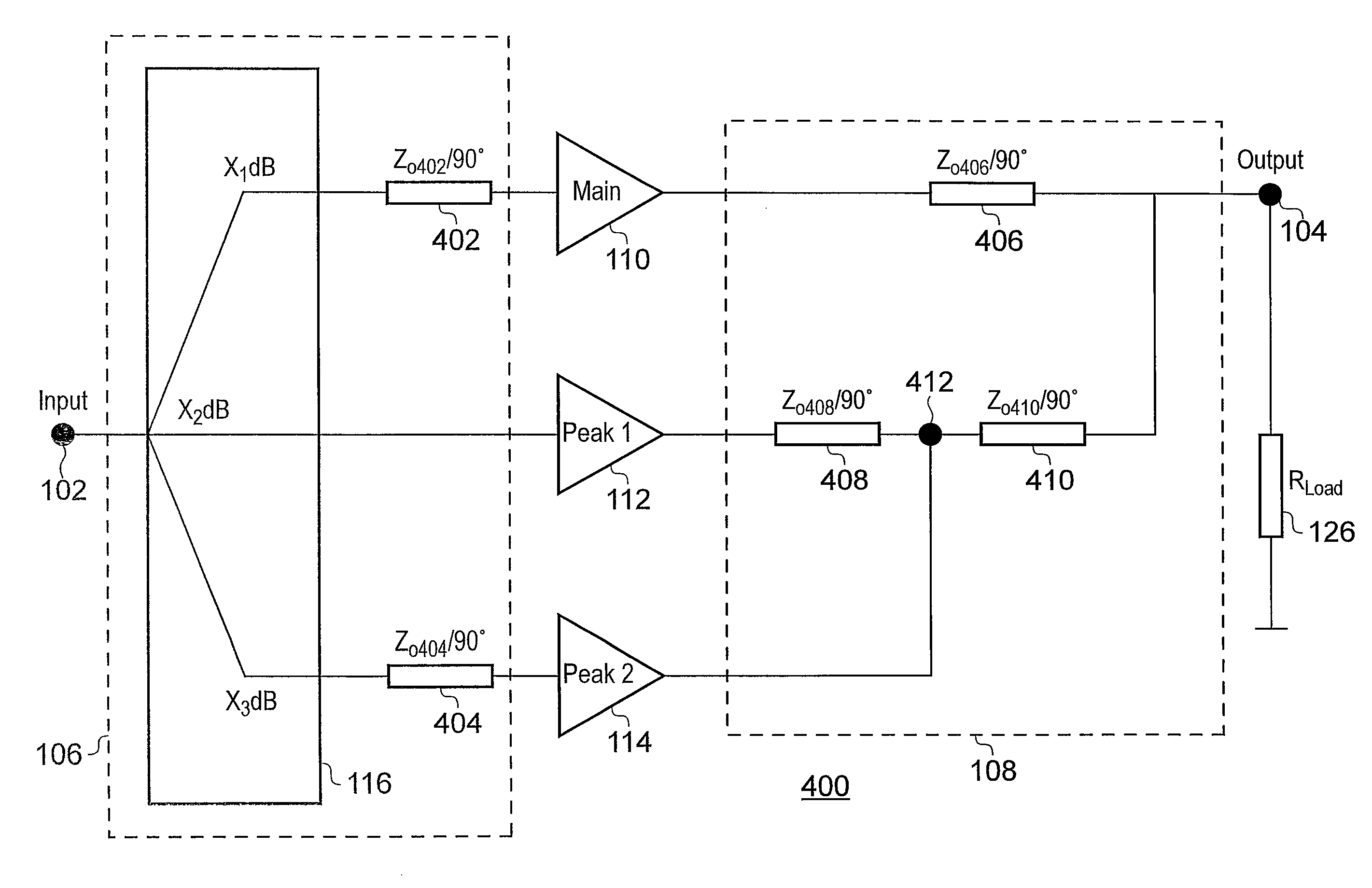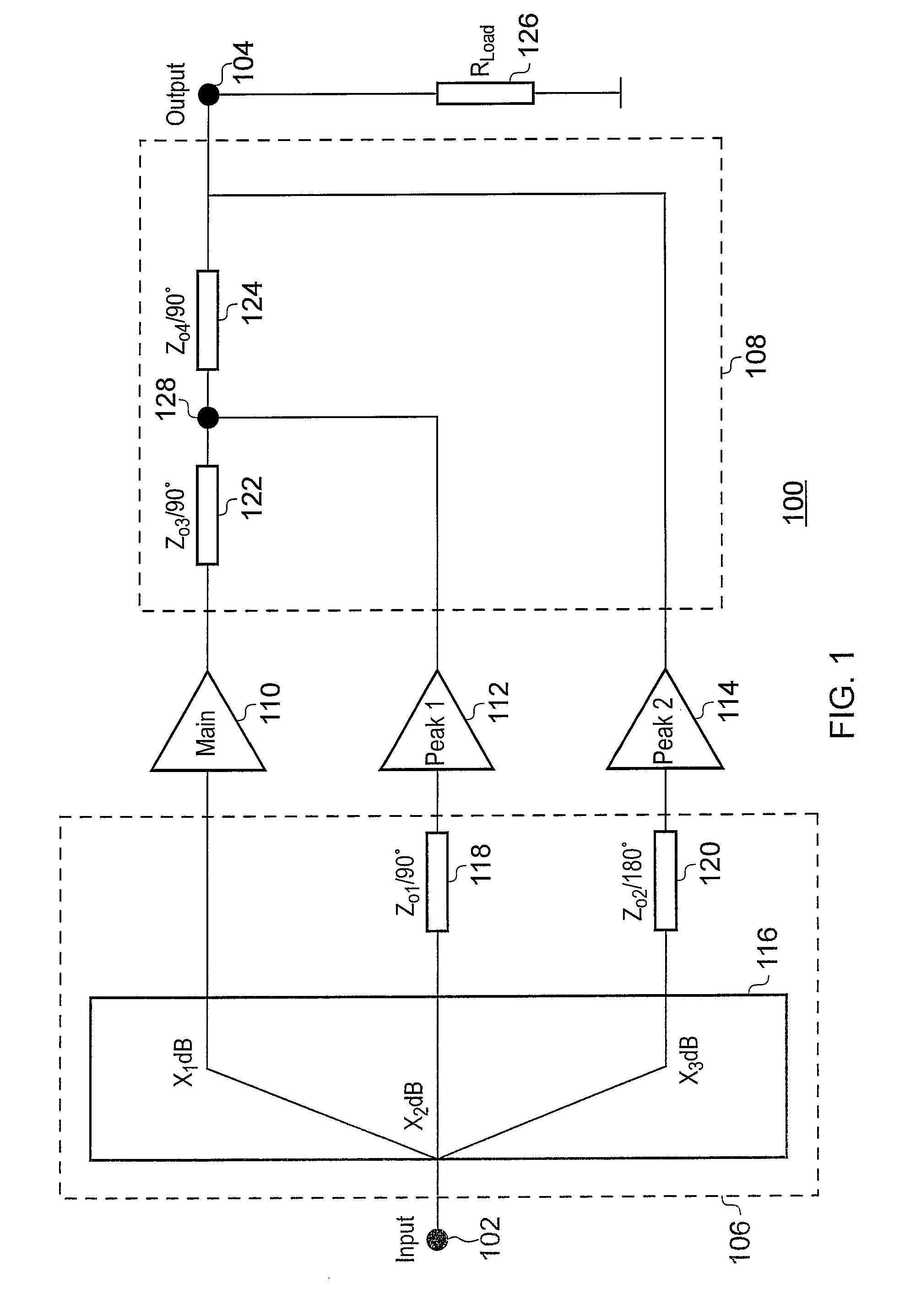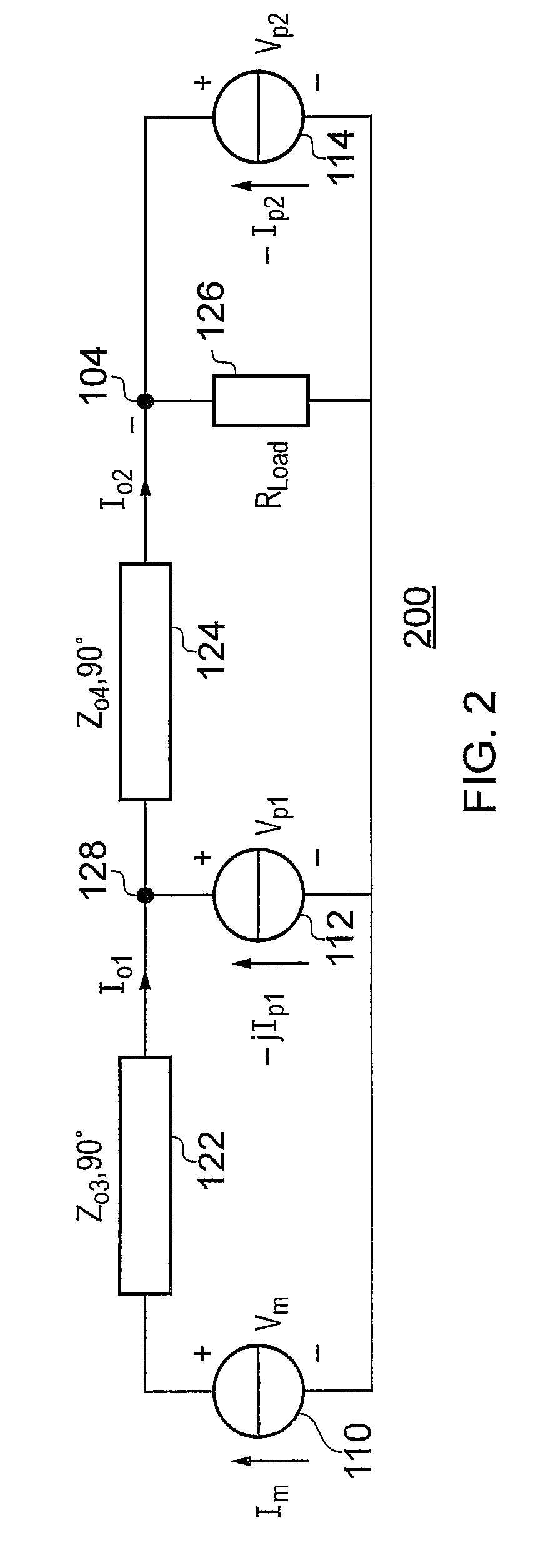3-way Doherty amplifier with minimum output network
a doherty amplifier and output network technology, which is applied in the direction of amplifiers, amplifier types, amplifiers with semiconductor devices/discharge tubes, etc., can solve the problems of increasing heavy saturation of the main stage, and significant degradation of the linearity between the input and output of the doherty amplifier, so as to achieve the effect of reducing the complexity reducing the cost of the input splitter, and increasing the efficiency of the 2-
- Summary
- Abstract
- Description
- Claims
- Application Information
AI Technical Summary
Benefits of technology
Problems solved by technology
Method used
Image
Examples
Embodiment Construction
[0026]The efficiency of a 2-way Doherty amplifier can be increased by extending it with an additional peak stage so as to form a 3-way Doherty amplifier. One issue of the conventional 3-way Doherty amplifier is that the load-line modulation of the main stage stops at a certain power level, causing heavy saturation of the main stage and a severe degradation of the linearity. One way of avoiding this involves using complicated drive profiles at the input network of the 3-way Doherty amplifier, thereby increasing the complexity of the input splitter. Another issue is that if three equal transistor devices are used to implement the three stages, a marginal improvement is obtained with respect to the symmetrical 2-way Doherty amplifier. The designer is then forced to choose different transistor power sizes, resulting in complicated selection procedures for individual configurations of the 3-way Doherty amplifier. The invention now addresses both issues.
[0027]FIG. 1 is a diagram of a conv...
PUM
 Login to View More
Login to View More Abstract
Description
Claims
Application Information
 Login to View More
Login to View More - R&D
- Intellectual Property
- Life Sciences
- Materials
- Tech Scout
- Unparalleled Data Quality
- Higher Quality Content
- 60% Fewer Hallucinations
Browse by: Latest US Patents, China's latest patents, Technical Efficacy Thesaurus, Application Domain, Technology Topic, Popular Technical Reports.
© 2025 PatSnap. All rights reserved.Legal|Privacy policy|Modern Slavery Act Transparency Statement|Sitemap|About US| Contact US: help@patsnap.com



